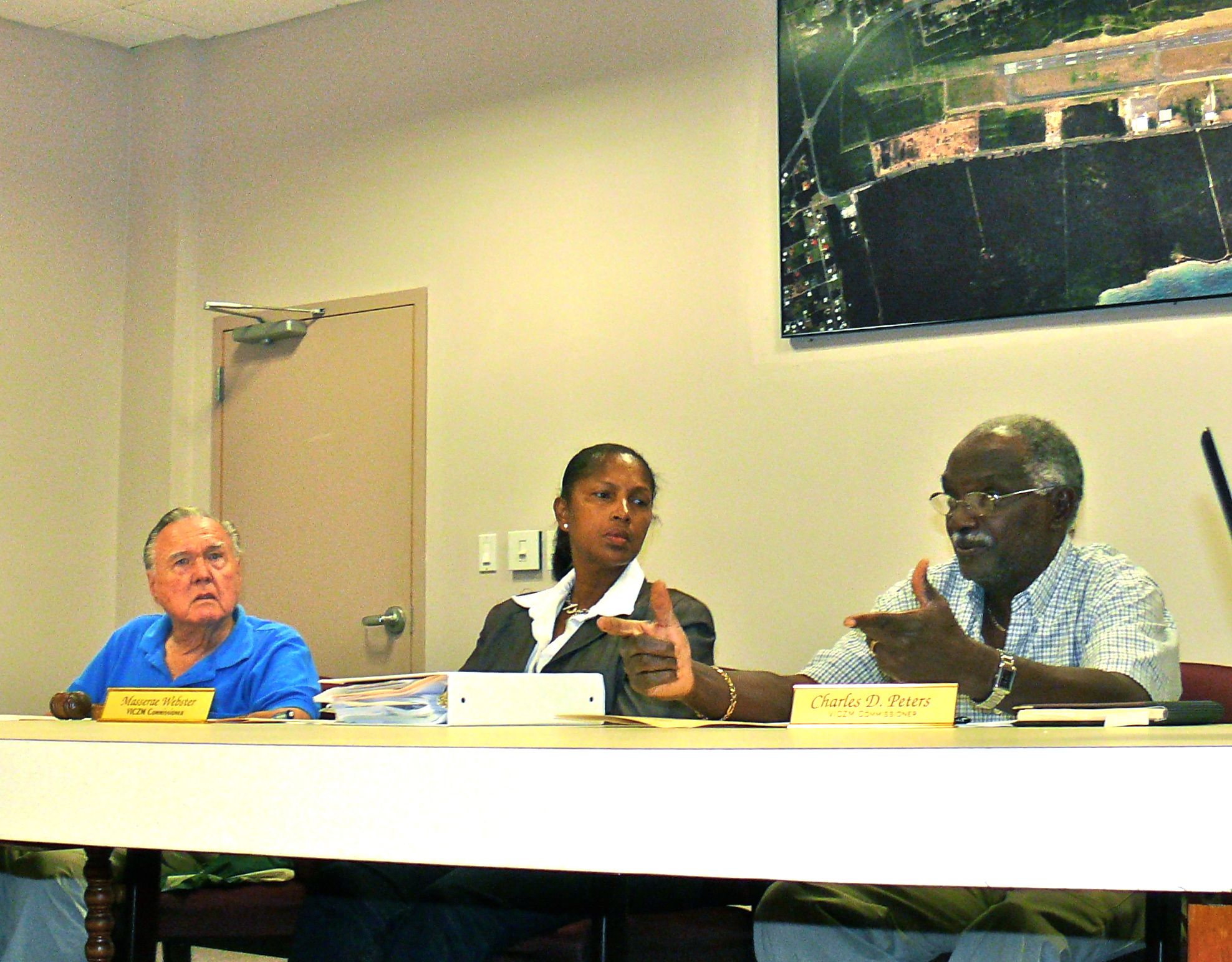
Since 1996 the FAA has been telling the Port Authority, from which WMA leases the landfill property, to close the facility down because of the dangers to aircraft posed by scavenging birds and dogs and smoke from burning debris.
Since then, several deadlines have come and gone, and the FAA has withheld millions in capital funding to the Henry E. Rohlsen Airport, which is near to the landfill. FAA released money last year, anticipating the landfill’s closure, but is watching the process closely and if it does not close, funds will be lost again.
Once it stops accepting trash, the U.S. Environmental Protection Agency requires capping of the landfill, monitoring for environmental contamination, testing for levels of methane and other gases produced by buried garbage, and installation of a gas-collection system.
During public hearings on WMA’s CZM permit earlier this year, the St. Croix Environmental Association criticized the choice of artificial turf to cover the landfill, and the CZM Committee asked the WMA to respond to each of the SEA comments.
SEA was not represented at Thursday’s hearing, but portions of their written comments were included in WMA’s response. SEA’s concerns centered around: the possible effects of high winds on astroturf; a lack of a cost comparison between the selected Closure Turf brand of artificial turf and a traditional vegetative turf covering.
SEA also expressed concern that they found only one landfill using Closure Turf, so the product was untested, and they conclude "vegetative cover would be the safest, most reliable and probably least expensive cover to use on the landfill."
According to Laurie Williams, WMA’s director of engineering for St. Croix, the covering would consist of a permeable artificial grass layer on top; three-quarters of an inch of sand as ballast, and an impermeable PVC layer underneath. Responding point by point to SEA’s comments, Williams said WMA’s research finds the Closure Turf to be less expensive to install – $2.15 per square foot versus $2.40 per square foot for vegetative cover- and then less expensive to maintain.
While SEA cites some studies suggesting that at least four inches of sand would be needed to keep the cover from being torn up in a 120 mile-per-hour storm, Williams cited wind-tunnel tests of Closure Turf at the Georgia Institute of Technology suggesting that less than half an inch of sand is sufficient.
Also, Williams said, the EPA is funding an experimental project placing solar panels atop closed landfills in Puerto Rico and "they have tacitly suggested the Virgin Islands could be a good candidate." An artificial turf covering would be more amenable to installing the solar panels and would require less maintenance, he said.
The project is expected to go out to bid as soon as the CZM permit is issued, said Williams.
Separately, but integral to closing the landfill, WMA is building a transfer-and-processing station. Once complete, trash will be diverted from the landfill to the transfer station, where it will be shredded, baled, and wrapped. The bales will be used to help get the proper final elevation and slope of the landfill in accordance with the WMA’s landfill closure plan.
Vincent Ebbesen, WMA’s director of Solid Waste for St. Croix, said plans call for work to be done in six phases. The first phase includes getting the transfer station up and running, installing two retention ponds, retaining walls and fixing the final slope of the landfill.
The main components of the gas-collection system will be installed in phase one and connected to the other parts of the system as work progresses, Ebbesen said.
"By the time we are done with the third stage, half the landfill will be fully installed and closed according to EPA requirements," said Ebbesen
The entire process will be done over three our four years, but Anguilla will stop accepting trash as soon as the transfer station is complete, he said. WMA has a CZM permit for the transfer station and is in the midst of acquiring the rest of the permits.
At WMA’s February governing board meeting, WMA Executive Director May Adams Cornwall said construction of the transfer station should take about six months once permits are in place.